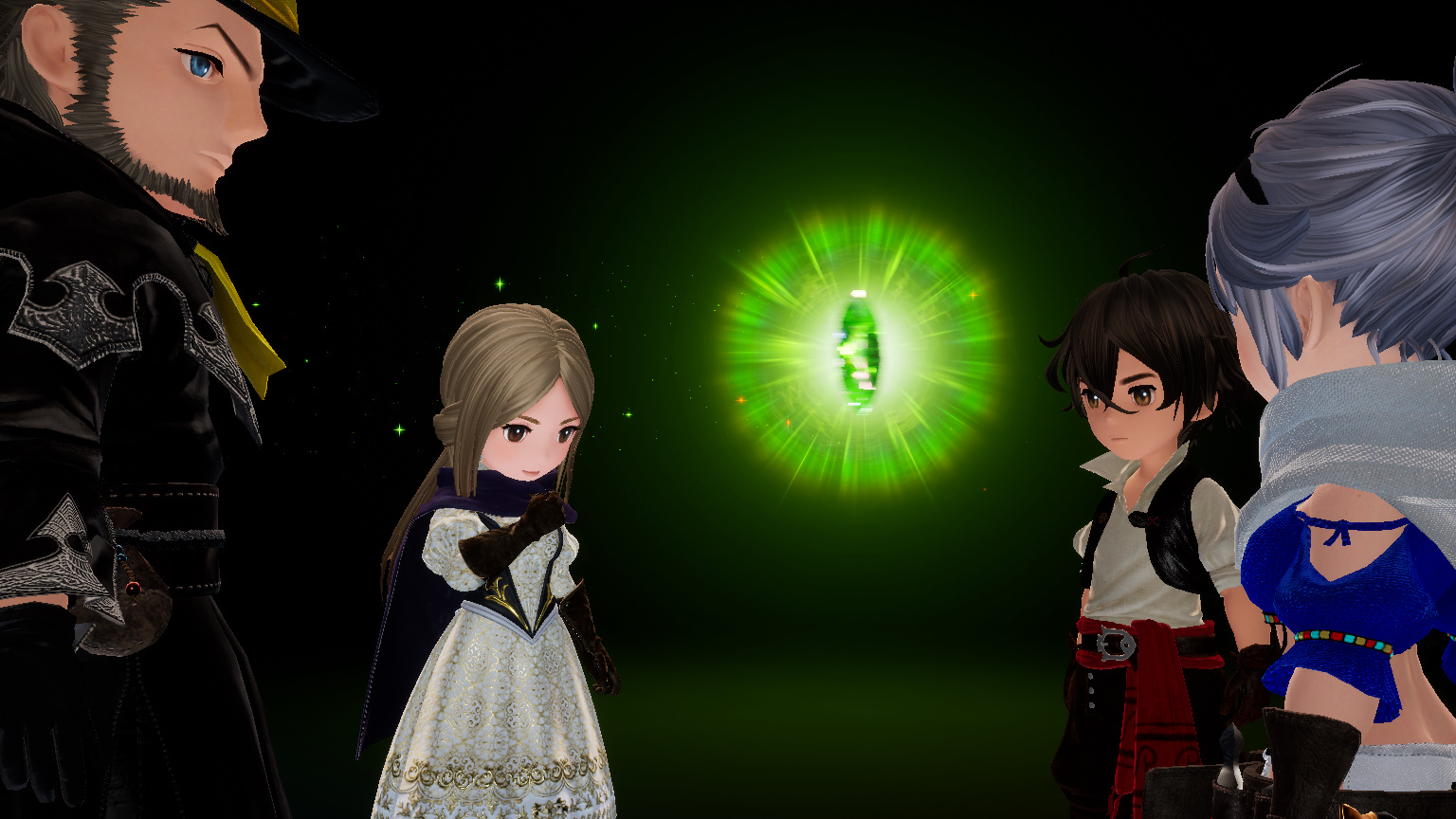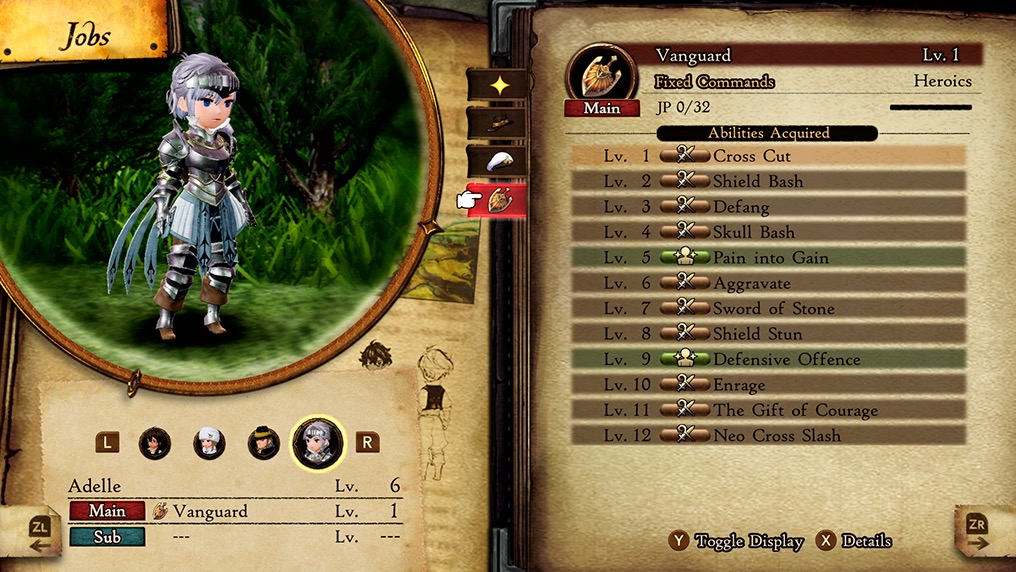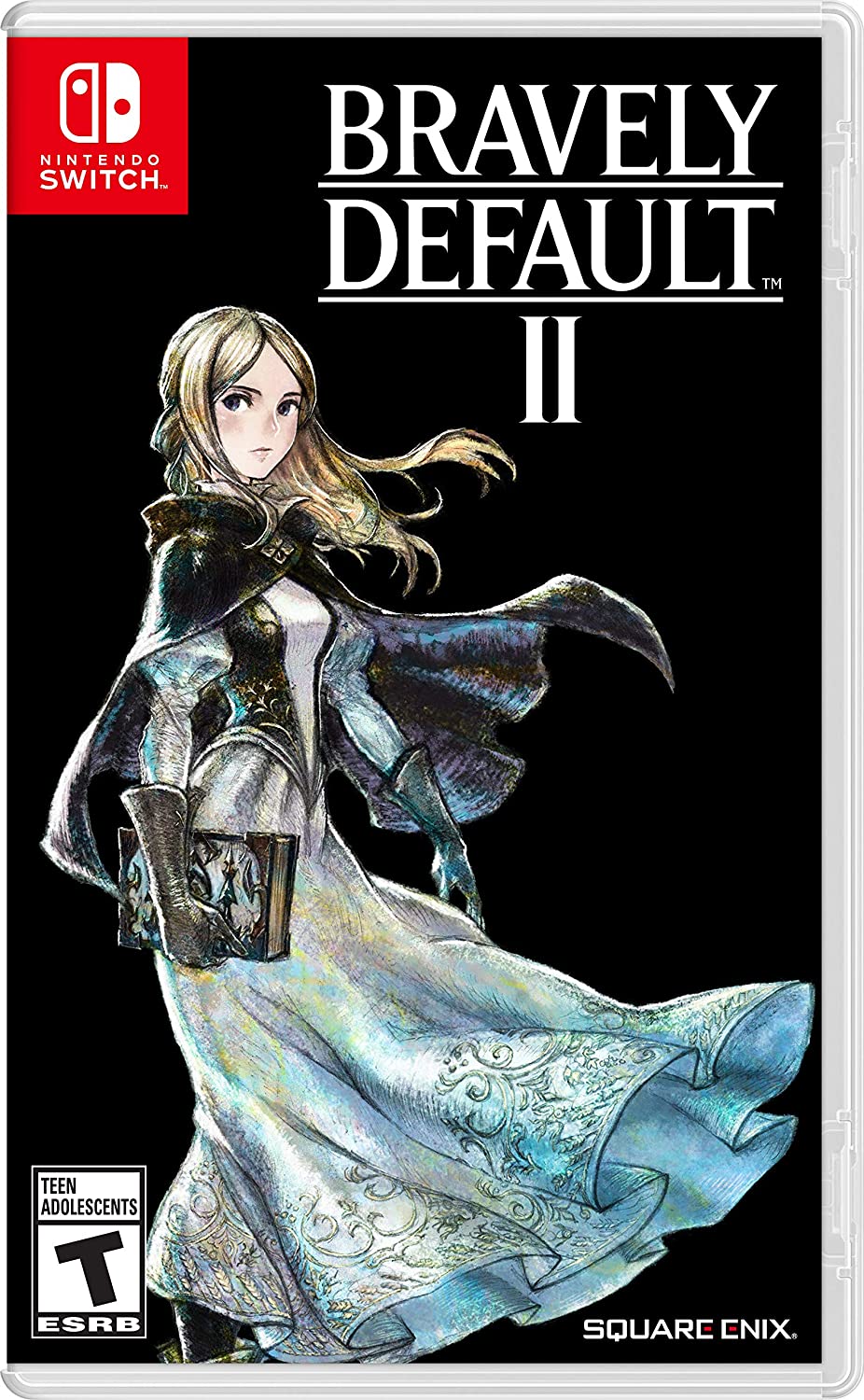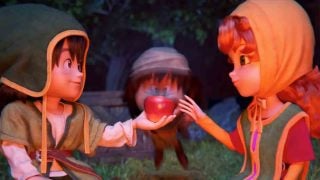By the early ’10s, JRPGs were going through a sort of renaissance. After spending a lot of the ’00s with a bad rap and titans of the genre like Final Fantasy breaking away from established conventions to more action-y or cinematic routes, various titles came along to breathe life back into the downtrodden genre — from niche beauties like the Etrian Odyssey series to the breakaway majesty of Xenoblade Chronicles, JRPGs were becoming less cool to hate. One of the shining forebearers of this movement — and arguably the most traditional feeling of them all — was Bravely Default, a 2012 (er, 2014?) 3DS title that captured both the classic vibes of SNES Final Fantasy titles (Final Fantasy V especially) and the smoothness of modern games.
The first Bravely Default — or at least its first half — was positively stellar. A main party of four characters with great chemistry and their own underlying (and complicated) motivations were assailed by a huge cast of villains ranging from the entertainingly petty to the monstrously villainous to the pensively honorable and everywhere in between. With features like adjustable encounter rates and a great variety of job classes bolstering the core and novel Brave/Default system, wonderful character designs by Akihiko Yoshida set against luscious fantastical backdrops, and a majestically rocking soundtrack by Sound Horizon’s Revo, it was a game poised to go down in history as one of the greats. Only an infamously repetitive second half torpedoed the game’s quality, leaving it a mixed bag in many player’s eyes.
It shouldn’t have been difficult to iron out that one, singular, glaring kink and keep all the good stuff in. And the game’s (first) sequel, Bravely Second, was certainly a smoother, bigger game, with more plot, more characters, more jobs, and more meta-finangling to boot. While it suffered from another core deficit when originally released in Japan (side quests apparently did not go the player’s way ever), those issues were hammered out for the international release, and while it never matched the high highs of the first title (likely due to a mishmash of new characters and plot ideas upon a preexisting world), it was a grand adventure in its own right.
Which makes the existence and general feeling of the newly released Bravely Default II all the stranger. In the five years since Second’s release, you’d imagine the developers would have a fresh slate of new ideas to build off of, especially with the release of the acclaimed Octopath Traveler (by the same dev team) in the meanwhile. You’d imagine that, after two goes where they just barely missed a home run, they’d knock it out of the park. But this is no grand slam. It feels more like a blooper single. Bravely Default II repeats many of the elements within the first game’s purview, but with much less oomph and charisma, like a singer trying to make a greatest hits album after one record (or two, but ignoring the second one’s existence).

On paper, the premise for Bravely Default II isn’t far from the original. There are four party members. Four crystals based on the classical elements that need rescuing. A nefarious shadowy villain group that is wreaking havoc across the land. A number of quirkier minor bosses that grant you job classes (Asterisks) upon their defeat. The art style is once again a combination of cutesy overworld models and gorgeous backgrounds. Revo’s returned to do the soundtrack after skipping over Bravely Second. Shouldn’t it feel the same?
I feel almost angry at myself for comparing the likes of this game’s writing (thus far) with the original, because all the character, charm, and personality feels dampened to an incredible degree. Three of the main four party members just feel like watered down versions of the quartered from the original BD. Gloria is Agnès without her charisma. Seth is Tiz but somehow blander. Adelle feels like Edea with all the quirky asides and without the conflicted beating heart that made her The Best. Only Elvis — the plucky (and Scottish) magic user with a predilection for good drink — feels fresh, ditching Ringabel’s rampant misogyny (disclaimer: I love Ringabel, but the man never drank his Respect Women juice) for good spirits. Interactions feel like a hollow echo of what came before, framing the concept of fun character moments without really having that many.

The general plot, too, is as cookie cutter as it gets. The first game’s plot may have looked basic on paper, but it was paced deliberately, giving you ample time to understand character quirks and motivations as it settled into its grand narrative. While BDII does get the party together and into the action of job hunting a little faster, it ends up feeling extremely hackneyed as a result. You’re fighting a typical evil empire kind of threat while searching for crystals. It’s too serious to be tongue in cheek, but not dramatic enough to be engaging. While the quirky minibosses are still aplenty, the game spends so much time churning through them that it barely has time to address its main cast. It feels more like the plot of some generic Final Fantasy spinoff than a Bravely successor.

Were it just the story that was limping along, then I could give the game a pass. And to its credit, the gameplay certainly has more novelty to it than the writing. The addition of equipment weight makes the player consider loadouts more carefully, and explicitly outlining stats like Restorative Power or Chance of Being Targeted is beneficial (even if the latter only feels like it’s starting to matter 30 hours into the game). Moving from random encounters to overworld models to start fights is a small but nice benefit. And the game’s core Brave/Default system of being able to take multiple actions in a turn is still fantastic.
Even so, the game’s jobs — what should feel the most interesting and invigorating part — feel almost copy and pasted from the first game, down to the first four you get being the exact same (Black Mage, White Mage, Monk, and Knight… er, Vanguard). While some abilities and features have been tweaked here and there, in general the jobs feel a lot more strait-laced… and dull. Black Mage has your usual three tiers of three elemental spells and not much else. White Mage has curatives and a couple small buffs. The physical classes are a bit more interesting (Monk is extremely engaging to use, definitely the most fun class I’ve acquired thus far), but still aren’t revolutionary. It doesn’t help that some of the actually new jobs just feel gimmicky (Beastmaster and Gambler). While I’m at a point in the game where I’m actually unlocking some more unique ones finally (like the super-tanky Shieldmaster or the Debuff-focused Pictomancer), there’s some serious déjà vu on the way there.

The game’s aesthetic sensibilities aren’t free from the sense of disappointment either, albeit in a very different way. The overall art style is very similar to the 3DS titles, but rendered very hi-def in Unreal Engine 4… which ends up right in the Uncanny Valley due to this cartoonishly proportioned humans having oddly real textures and details. While the backgrounds of cities remain lush, the overly rendered models look very out of place at times. Even the soundtrack feels a little limp — Revo’s trademarks are all there, but little has stuck out so far, which is a shame considering just how many slappers the first game had. The asterisk boss theme is aight, but it’s no He of the Name.
I’m “only” 30 hours into the game, having cleared the Wiswald chapter of the game, and I’m hoping for some sort of reverse of the first game’s trajectory, where the so-so first half gives way to a stunning second half. But at the moment my hopes are middling. The game isn’t bad or even boring, just… uninspired. The textbook definition of going through the motions.
I feel bad, drawing so many comparisons to the first title throughout this review when the sequel should be considered on its own merits. I simply find it difficult, since basically all of those merits were already in the first one. I never thought a game would make me want to actually replay Bravely Default after the inanity of its second half, but the urge rises the more I play of this one. While there’s still more to go of this by-the-numbers sequel, so far there’s been nothing Brave about it, as it’s Defaulted to the barest minimum needed to be considered a sequel.


